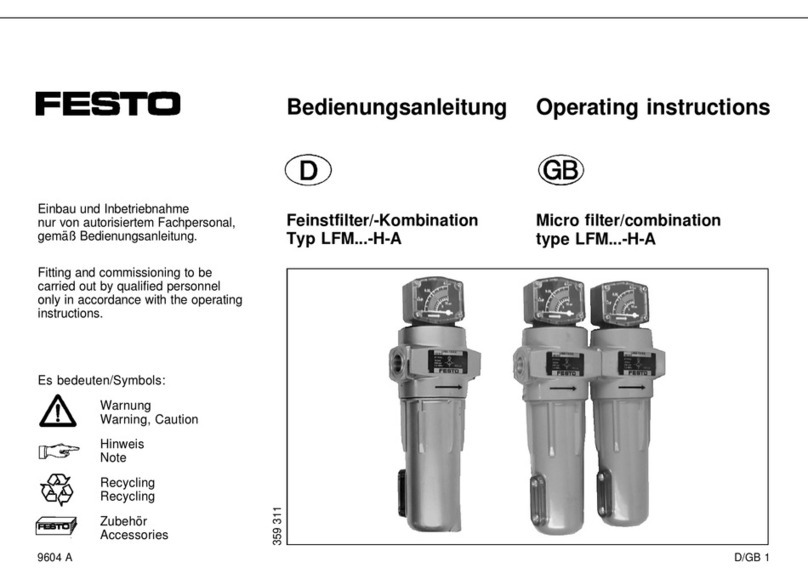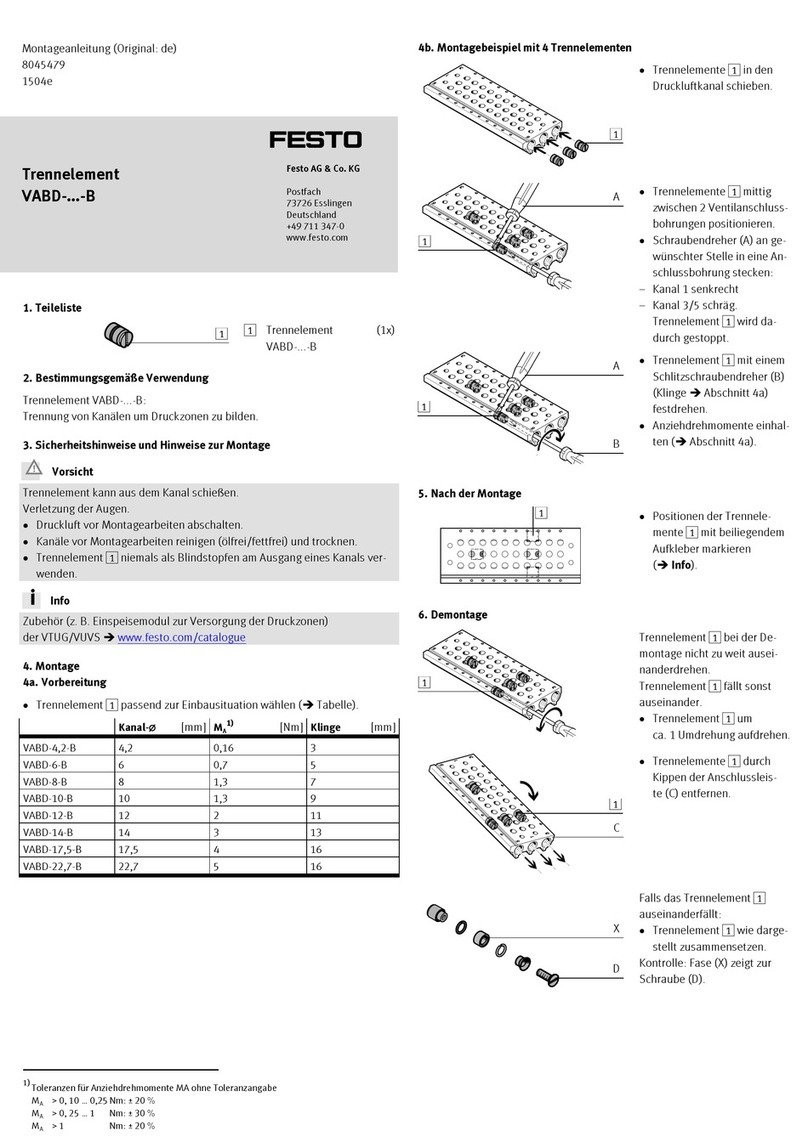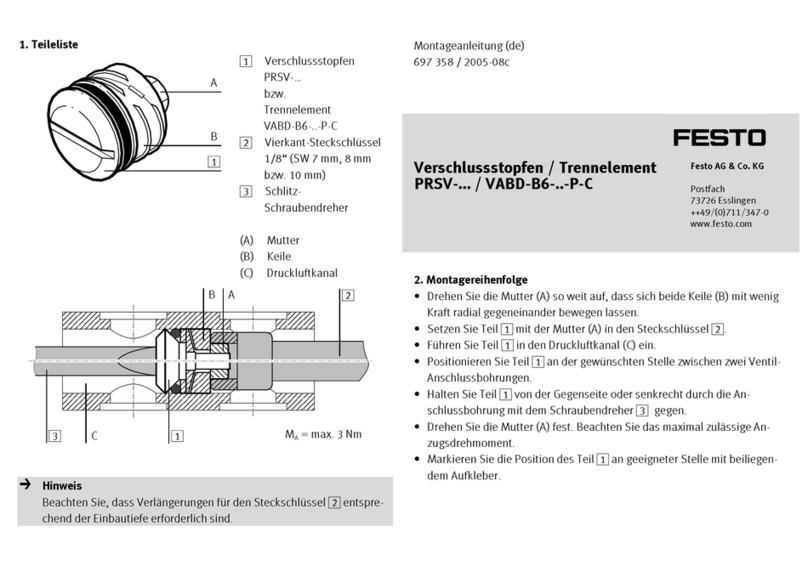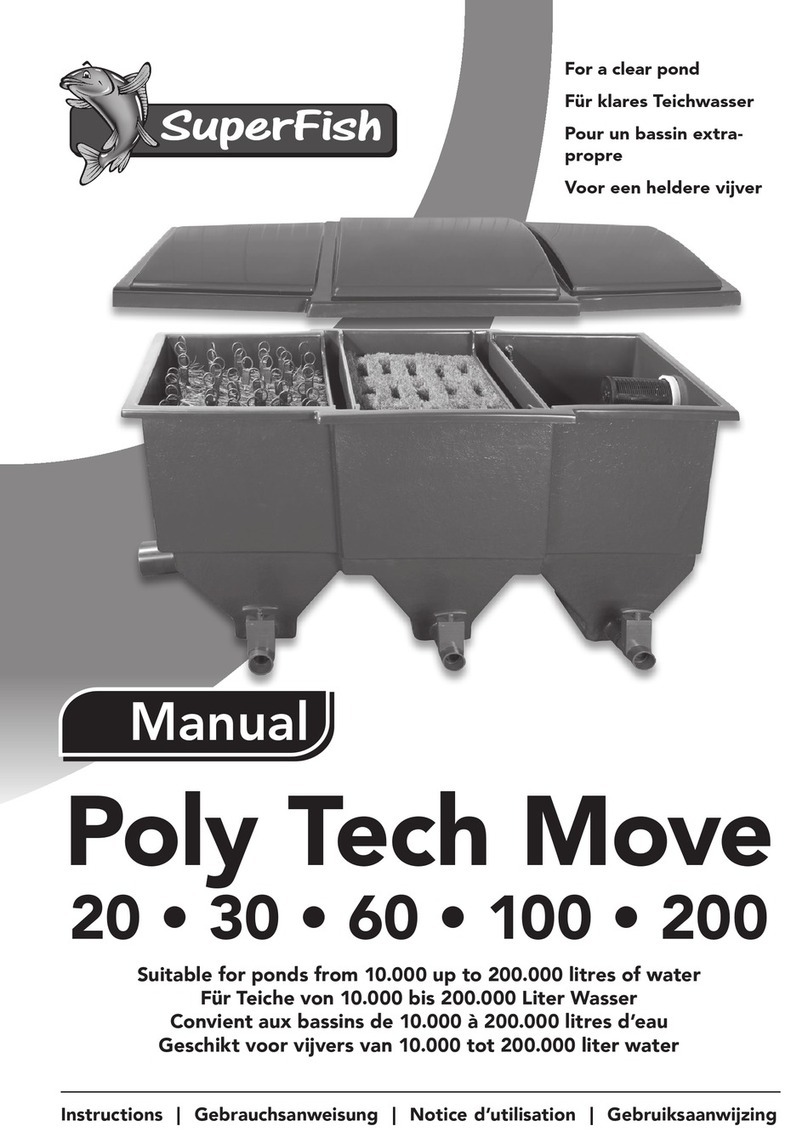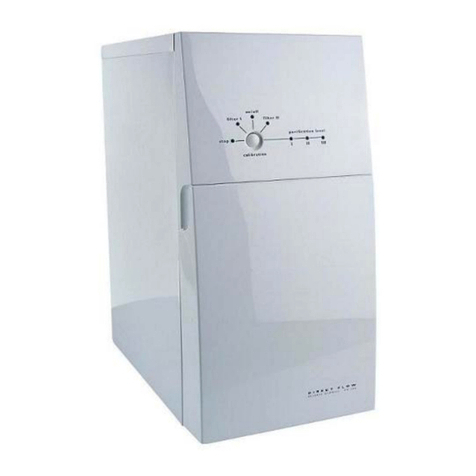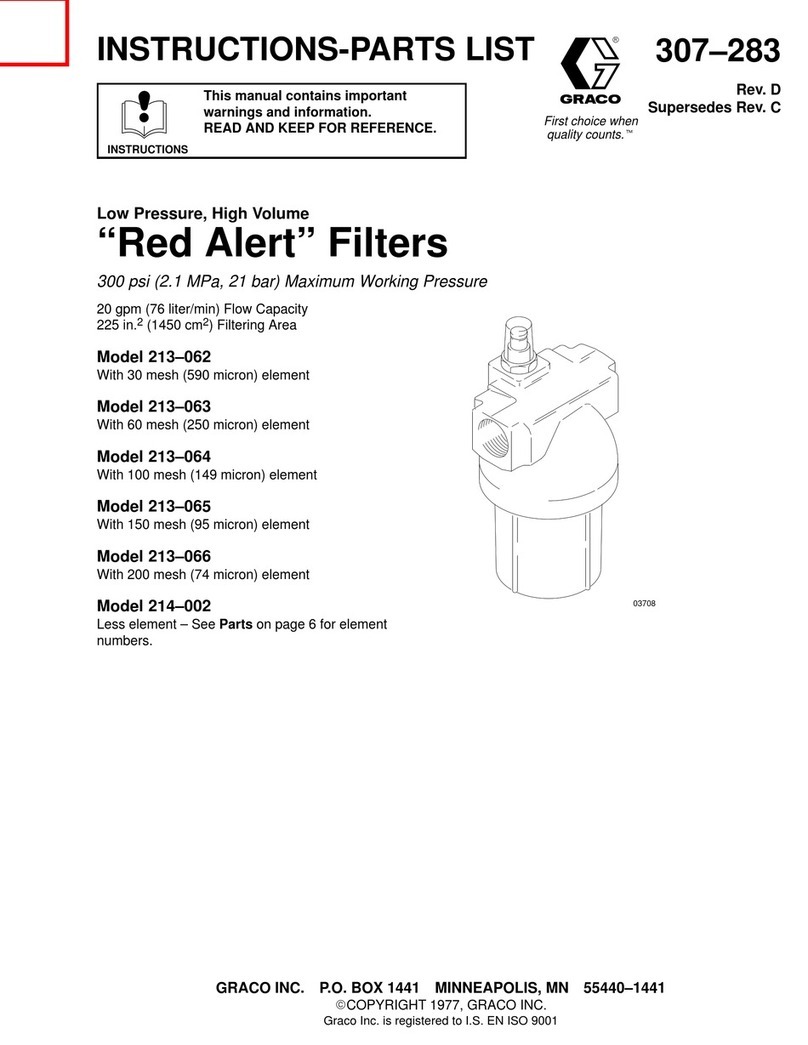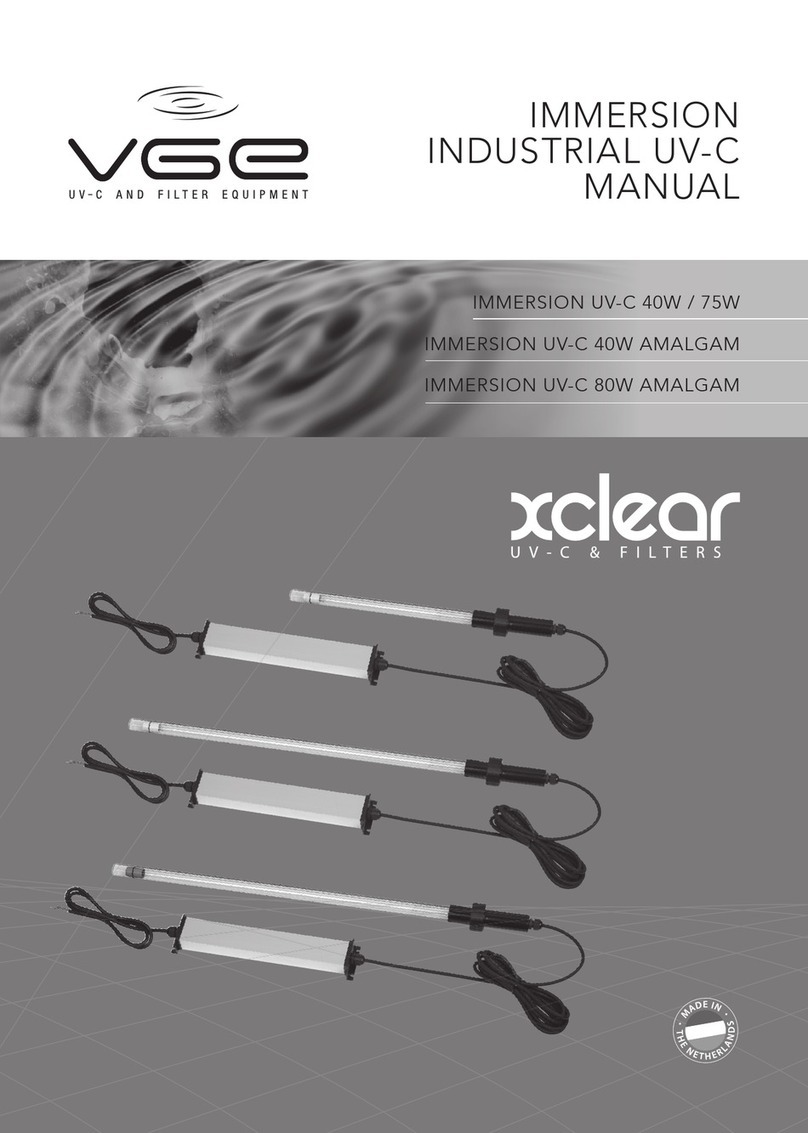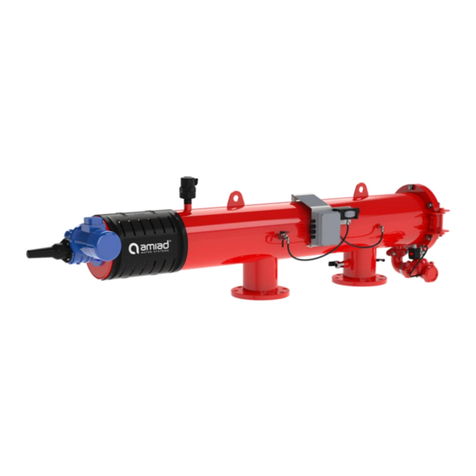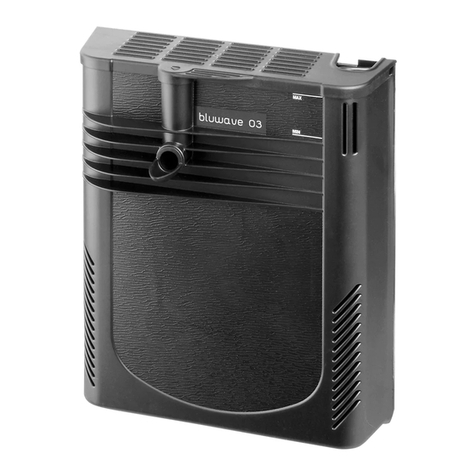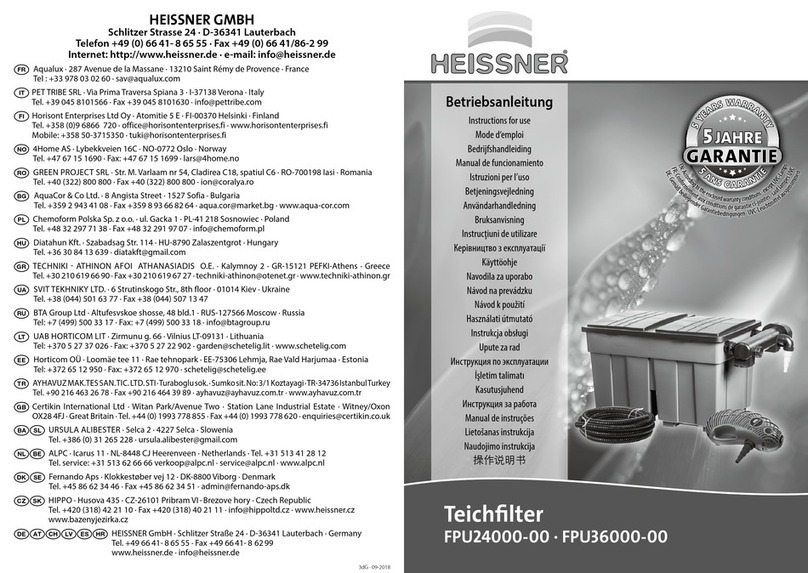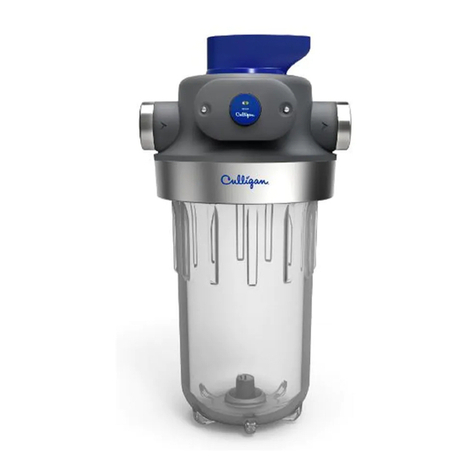Festo 8079862 User manual

Festo Didactic
696684 en
09/2019
8079862
Filtration Learning System
MPS
PA
Station
s
Operating instructions

Order number: 696684 (PC.TW.0022)
Revision level: 09/2019 (V3.0.1)
Authors: Jürgen Helmich, Frank Ebel
Layout: Festo Didactic
© Festo Didactic SE, Rechbergstraße 3, 73770 Denkendorf, Germany, 2019
+49 711 3467-0 www.festo-didactic.com
Reproduction, distribution and utilisation of this document, as well as the communication of its contents to
others without explicit authorisation, is prohibited. Offenders will be held liable for damages. All rights
reserved, in particular the right to file patent, utility model and registered design applications.
For the sake of readability
throughout these operating instructions, all gender-specific
terms are to be considered to refer to both
the feminine and the masculine form,
e
xcept when referring to a particular person.
CAUTION
These operating instructions must always be available to the user.
The operating instructions must be read before commissioning.
The safety instructions must be observed
Non-observance may result in severe personal injury or damage to property.

Filtration Learning System
© Festo Didactic 696684 3
Contents
1 General requirements for operating the devices _______________________________________________7
2 Pictograms _____________________________________________________________________________8
3 Intended use __________________________________________________________________________ 10
4 For your safety ________________________________________________________________________ 11
4.1 Important information _______________________________________________________________ 11
4.2 Obligations of the operating company __________________________________________________ 11
4.3 Obligations of the trainees ___________________________________________________________ 11
4.4 Dangers when handling the components and systems _____________________________________ 12
5 Work and safety instructions_____________________________________________________________ 13
5.1 General remarks____________________________________________________________________ 13
5.2 Mechanical system__________________________________________________________________ 13
5.3 Electrical system ___________________________________________________________________ 14
5.4 Pneumatics________________________________________________________________________ 15
5.5 Process technology _________________________________________________________________ 16
6 Technical data_________________________________________________________________________ 17
6.1 General data_______________________________________________________________________ 17
6.2 Pin allocation table _________________________________________________________________ 18
6.2.1 Digital terminal _________________________________________________________________ 18
6.2.2 Analog terminal_________________________________________________________________ 19
6.2.3 Control panel___________________________________________________________________ 20
7 Transport/unpacking/scope of delivery____________________________________________________ 21
7.1 Transport _________________________________________________________________________ 21
7.2 Unpacking_________________________________________________________________________ 21
7.3 Scope of delivery ___________________________________________________________________ 21
8 Setup ________________________________________________________________________________ 22
8.1 The Filtration Learning System ________________________________________________________ 22
8.2 The Filtration station ________________________________________________________________ 23
8.2.1 Main components _______________________________________________________________ 24
8.2.2 Small parts included in the scope of delivery of the station______________________________ 25
8.2.3 P&ID__________________________________________________________________________ 25
8.3 Function of the pressure control system_________________________________________________ 26
8.4 Proportional pressure regulator _______________________________________________________ 27
8.5 Pressure sensor with analog and switching signal_________________________________________ 27

Filtration Learning System
4© Festo Didactic 696684
8.6 Stirrer ____________________________________________________________________________ 28
8.7 Pump_____________________________________________________________________________ 29
8.8 3-way ball valve unit ________________________________________________________________ 29
8.9 Gate valve and butterfly valve_________________________________________________________ 30
8.10 Level monitoring __________________________________________________________________ 31
8.10.1 Capacitive proximity sensors _____________________________________________________ 31
8.10.2 Float switch, lateral installation ___________________________________________________ 32
8.11 Compressed air supply _____________________________________________________________ 32
8.12 Electrical connection technology _____________________________________________________ 33
8.12.1 Connection board ______________________________________________________________ 33
8.12.2 Mounting frame _______________________________________________________________ 34
8.12.3 19″frame_____________________________________________________________________ 35
8.13 PLC EduTrainer Universal S7-1512C ___________________________________________________ 36
8.14 Control console with operator unit TP700 Comfort _______________________________________ 37
8.15 EasyPort and FluidLab-PA closed-loop V5 ______________________________________________ 37
8.16 USB device server _________________________________________________________________ 38
8.17 Trolley 700 _______________________________________________________________________ 38
9 Function______________________________________________________________________________ 39
9.1 Function as individual station _________________________________________________________ 39
9.2 Operation as a downstream station ____________________________________________________ 39
10 Sequence description__________________________________________________________________ 40
10.1 Sequence description, filter process __________________________________________________ 40
10.2 Start-up prerequisites ______________________________________________________________ 40
10.2.1 individual station ______________________________________________________________ 40
10.2.2 Station with downstream station__________________________________________________ 40
10.2.3 Rinsing process________________________________________________________________ 40
10.3 Initial position ____________________________________________________________________ 40
10.4 Sequence ________________________________________________________________________ 40
10.4.1 Automatic mode without downstream station _______________________________________ 40
10.4.2 Automatic mode with downstream station __________________________________________ 41
10.4.3 Automatic operation, rinsing process ______________________________________________ 41
10.4.4 Manual mode _________________________________________________________________ 42
11 Commissioning _______________________________________________________________________ 43
11.1 Workstation ______________________________________________________________________ 44
11.2 Filling and emptying________________________________________________________________ 44
11.3 Power supply _____________________________________________________________________ 45
11.4 Compressed air supply _____________________________________________________________ 45

Filtration Learning System
© Festo Didactic 696684 5
11.5 Actuation with PLC EduTrainer and control console ______________________________________ 45
11.5.1 Cable connections between station and EduTrainer PLC _______________________________ 45
11.5.2 Cable connections between control console and PLC EduTrainer ________________________ 47
11.5.3 Establish 1-bit communication connections _________________________________________ 47
11.5.4 Load sample project ____________________________________________________________ 48
11.5.5 Starting the sequence __________________________________________________________ 49
11.5.6 Operation on the control console with operator unit TP700 Comfort _____________________ 50
11.6 Actuation with EasyPort 19″_________________________________________________________ 55
11.7 Adjusting sensors _________________________________________________________________ 56
11.7.1 Capacitive proximity sensor ______________________________________________________ 56
11.7.2 Float switch, lateral installation___________________________________________________ 57
12 Maintenance and troubleshooting _______________________________________________________ 58
12.1 Maintenance______________________________________________________________________ 58
12.2 Error in the piping system and tanks __________________________________________________ 59
12.3 Error in the electrical system_________________________________________________________ 59
12.4 Mechanical error __________________________________________________________________ 60
12.5 Error due to parameterization ________________________________________________________ 60
13 Further information and updates ________________________________________________________ 61
14 Disposal ____________________________________________________________________________ 61
15 List of figures ________________________________________________________________________ 62

Filtration Learning System
6© Festo Didactic 696684

Filtration Learning System
© Festo Didactic 696684 7
1General requirements for operating the devices
General requirements for safe operation of the devices:
•National regulations for operating electrical systems and equipment must be observed in commercial
facilities.
•The laboratory or classroom must be overseen by a supervisor.
–A supervisor is a qualified electrician or a person who has been trained in electrical engineering,
knows the respective safety requirements and safety regulations and whose training has been
documented accordingly.
The laboratory or the classroom must be equipped with the following devices:
•An emergency-off device must be provided.
–At least one emergency-off device must be located within, and one outside of the laboratory or the
classroom.
•The laboratory or classroom must be secured so that operating voltage and compressed air supply
cannot be activated by any unauthorized persons, for example with:
–A key switch
–Lockable on-off valves
•The laboratory or classroom must be protected by residual current devices (RCDs).
–Electrical devices (e.g. power supply units, compressors and hydraulic power units) may only be
operated in training rooms which are equipped with residual current devices.
–Type B residual current circuit breakers with a residual current of ≤ 30 mA must be used.
•The laboratory or classroom must be protected by overcurrent protection devices.
–Fuses or circuit breakers
•No damaged or defective devices may be used.
–Damaged devices must be banned from further use and removed from the laboratory or classroom.
–Damaged connecting cables, pneumatic tubing and hydraulic hoses represent a safety risk and
must be removed from the laboratory or classroom.

Filtration Learning System
8© Festo Didactic 696684
2Pictograms
This document and the hardware described in it include warnings concerning possible hazards which may
arise if the system is used incorrectly. The following pictograms are used:
DANGER
... indicates an
imminently hazardous situation that will result in fatal or severe personal
injur
y if not avoided.
Dan
ger of crushing.
Never reach into the system while in operation.
WARNING
… indicates a
potentially hazardous situation which may result in fatal or severe personal
inju
ry if not avoided.
Strong optical radiat
ion.
Non
-observance may result in severe personal injury.
CAUTION
... indicates a
possibly
hazardous situation which may result in moderate or slight personal
injury if not avoided.
Hot surfaces.
Non
-observance may result in burns.

Filtration Learning System Pictograms
© Festo Didactic 696684 9
General information about a hazard
Switch off the device and unplug the connection for power supply before
assembly, repair, maintenance, and cleaning work.
Observe the user documentation, in particular all safety instructions. Non-
observance may result in severe personal injury or damage to property.
Warning of electric shock
Warning of laser radiation
Warning of strong optical radiation
Warning of hot surfaces
Warning of crushing hazard
Warning of drawing in due to rotating rollers
Warning of loud noises
Warning of lifting heavy loads
Warning of accidental retraction

Filtration Learning System
10 © Festo Didactic 696684
3Intended use
Festo Didactic systems and components must only be used:
•For their intended use in teaching and training applications
•When their safety functions are in perfect condition
Festo Didactic systems and components are designed in accordance with the latest technology and
recognized safety rules. However, life and limb of the user and third parties may be endangered and the
components may be impaired if they are used incorrectly.
The Festo Didactic learning system has been developed and produced exclusively for education and training
in the field of automation technology. The training company and/or trainers must ensure that all apprentices
observe the safety precautions described in this workbook.
Festo Didactic hereby excludes any and all liability for damages suffered by trainees, the training company
and/or any third parties, which occur during use of the device in situations that serve any purpose other
than training and/or vocational education, unless such damage has been caused by Festo Didactic due to
malicious intent or gross negligence.

Filtration Learning System
© Festo Didactic 696684 11
4For your safety
4.1 Important information
Knowledge of the basic safety instructions and safety regulations is a fundamental prerequisite for safe
handling and trouble-free operation of Festo Didactic components and systems. This manual includes the
most important instructions for safe use of Festo Didactic components and systems.
In particular, the safety instructions must be adhered to by all persons who work with Festo Didactic
components and systems. Furthermore, all pertinent accident prevention rules and regulations that are
applicable at the respective place of use must be adhered to.
4.2 Obligations of the operating company
The operator undertakes only to allow those persons to work with the Festo Didactic components and
systems who:
•Are familiar with the basic regulations regarding work safety and accident prevention and have been
instructed in the use of Festo Didactic components and systems.
•Have read and understood the chapter concerning safety and the warnings in this manual.
Personnel should be tested at regular intervals to ensure that they are safety-conscious in their work habits.
4.3 Obligations of the trainees
All persons who have been entrusted to work with Festo Didactic components and systems shall complete
the following steps before beginning work:
•Read the chapter about safety and warnings in this manual,
•Familiarize themselves with the basic regulations regarding occupational safety and accident prevention

For your safety Filtration Learning System
12 © Festo Didactic 696684
4.4 Dangers when handling the components and systems
Festo Didactic systems and components are designed in accordance with the latest technology and
recognized safety rules. However, life and limb of the user or third parties may be endangered and the
machine or other property may be damaged during their use.
Festo Didactic systems and components must only be used:
•for their intended purpose
•when in perfect working condition.
WARNING
Malfunctions which could impair safety must be elimina
ted immediately!
CAUTION
Improper repairs or modifications may result in unfore
seeable operating states. Do not
carry out repairs on the
device.

Filtration Learning System
© Festo Didactic 696684 13
5Work and safety instructions
5.1 General remarks
•Trainees should work with the circuits only under the supervision of an instructor.
•Electrical devices (e.g. power supply units, compressors and hydraulic power units) may only be
operated in training rooms which are equipped with residual current devices (RCDs).
•Observe specifications included in the technical data for the individual components, and in particular all
safety instructions!
•Malfunctions which might impair safety must not be generated when the device is operated for training
purposes.
•Wear your personal protective equipment (safety goggles, safety shoes) when working on the circuits.
5.2 Mechanical system
•Switch off the power supply.
– Switch off both the working power and control power before working on the circuit.
– Only reach into the setup when it is at a complete standstill.
– Be aware of potential overtravel times of actuators.
•Mount all of the components securely on the profile plate.
•Make sure limit switches are not operated from the front.
•Risk of injury during troubleshooting.
Use a tool to operate the limit switches, for example a screwdriver.
•Set all components up so that it’s easy to activate the switches and interrupters.
•Follow the instructions regarding positioning of the components.

Work and safety instructions Filtration Learning System
14 © Festo Didactic 696684
5.3 Electrical system
•Risk of fatal injury in case of interrupted PE conductor!
– The protective conductor (yellow-green) must not be interrupted, either inside or
outside of the device.
– The insulation of the protective conductor must never be damaged or removed.
•Risk of death from series connection of power supply units!
Contact voltages of greater than 25 V AC or 60 V DC are not permissible.
Coming into contact with voltages of greater than 50 V AC or 120 V DC may be fatal.
– Do not connect voltage sources in series.
•Risk of death due to electric shock!
Protect the outputs of the power supply units (output sockets/terminals) and cables connected to them
from direct contact.
– Only use cables with adequate insulation and electric strength.
– Use safety sockets with fully shrouded contact points.
•Disconnect from all sources of electric power!
– Switch off the power supply before working on the circuit.
– Please note that electrical energy may be stored in individual components.
Information on this issue is available in the datasheets and operating instructions included
with the components.
–Caution!
Capacitors inside the device may still be charged even after being
disconnected from all sources of voltage.
•Devices with a grounding terminal must always be grounded.
– If a ground connection (green/yellow laboratory socket) is available, it must always be connected
to protective ground. The protective grounding must always be connected first (before voltage) and
disconnected last (after voltage).
– Some devices have high leakage current. These devices must be additionally grounded with
a protective earth conductor.
•Use safety extra-low voltages only: max. 24 V DC.
•The power supply unit must be operated only with a power supply with a grounding conductor.
•Establishing and disconnecting electrical connections
– Electrical connections may be established only in the absence of voltage.
– Electrical connections may be disconnected only in the absence of voltage.

Filtration Learning System Work and safety instructions
© Festo Didactic 696684 15
•Maximum permissible current loads for cables and devices must not be exceeded.
– Always compare the current ratings of the device, the cable and the fuse to ensure that they match.
– In the event that these are not the same, use a separate upstream fuse in order to
provide appropriate overcurrent protection.
•Use only connecting cables with safety plugs for electrical connections.
•When laying connecting cables, make sure they are not kinked or pinched.
•Do not lay cables over hot surfaces.
– Hot surfaces are indicated by a corresponding warning symbol.
•Make sure that connecting cables are not subjected to continuous tensile loads.
•The device is not equipped with a built-in fuse unless otherwise specified in the technical data.
•Pull the plug only when disconnecting connecting cables; never pull the cable.
•Hazard-free operation of the device is no longer possible in the case of:
– Visible damage
– Malfunction
– Incorrect storage
– Incorrect transport.
– Switch off the power supply immediately.
– Protect the device against an inadvertent restart.
5.4 Pneumatics
•Depressurize the system.
– Switch off the compressed air supply before working on the circuit.
– Use pressure gauges to check whether the entire circuit is pressure-free.
– Please note that energy may be stored in reservoirs.
Information on this issue is available in the datasheets and operating instructions included
with the components.
•Do not exceed the maximum permissible pressure of 6 bar (600 kPa).
•Do not switch on the compressed air until all the tubing connectors have been joined and secured.
•Do not disconnect tubing while under pressure.
•Do not attempt to seal or plug pneumatic tubing or plug connectors with your hands or fingers.
•Risk of injury when switching on compressed air!
Cylinders can advance and retract automatically.

Work and safety instructions Filtration Learning System
16 © Festo Didactic 696684
•Risk of accident due to advancing cylinders.
– Always position pneumatic cylinders so that the piston rod’s working space is unobstructed
over the entire stroke range.
– Make sure that the piston rod cannot collide with any rigid components of the setup.
•Risk of accident due to pneumatic tubing slipping off!
– Use shortest possible barbed tubing connectors.
– If pneumatic tubing slips off:
Switch off the compressed air supply immediately.
•Pneumatic circuit setup:
Connect the devices with plastic tubing with an outside diameter of 4 or 6 mm. Push the pneumatic
tubing into the push-in connector as far as it will go.
•Switch off the compressed air supply before dismantling the circuit.
•Dismantling the pneumatic circuit
Press the blue release ring down so that the pneumatic tubing can be pulled out.
•Noise due to escaping compressed air
– Noise caused by escaping compressed air may damage your hearing. Reduce noise by using
pneumatic mufflers, or wear hearing protection if noise cannot be avoided.
– All of the exhaust ports of the components included in the equipment set are equipped with
mufflers. Do not remove these mufflers.
5.5 Process technology
Always fill the tanks when the power is switched off!
Switch off the 24 V DC and 230 V AC power supply!
•Use tap water of drinking water quality (recommended) to ensure longer maintenance-free operation of
the stations (valves, pump, etc.).
•The maximum operating temperature of the containers of +65°C must not be exceeded.
•Only start up the heater when the heating element is completely immersed in the liquid.
•The maximum operating pressure for the liquid in the pipes must not exceed 0.5 bar.
•Do not allow the pump to run dry. The pump must not be used with seawater, contaminated liquids or
viscous media.
•Drain the liquid in the stations/system before making changes in the piping layout.
•The liquid in the station can be drained by opening the drain valves!
•No liquid should be left in the system for a long period of time, as bacteria such as Legionella can form
in it.

Filtration Learning System
© Festo Didactic 696684 17
6Technical data
6.1 General data
Parameter Value
Operating pressure (compressed air) 600 kPa (6 bar)
Max. operating pressure in piping (water) 50 kPa (0.5 bar)
Operating voltage 24 V DC, 4 A, ≤ 100 W output power, SELV/PELV limited
power supply (LPS)
Digital inputs/outputs
Inputs: 4
Outputs: 4
Analog inputs/outputs
Inputs: 1
Outputs: 1
Max. 24 V DC
Max. 0.5 A per output
Max. 4 A total
Signal range of the final control
element
Proportional pressure regulator
Pressure 0…2 bar
Voltage 0...10 V
Working range of the pressure system 0...2 bar
Measuring range of the pressure sensor 0...10 bar
Signal of the sensor of the pressure system Voltage 0...10 V
Electrical connection 24-pin IEEE-488 socket (SysLink)
15-pin ISO 4903 socket (Sub-D)
Pneumatic connection Plastic tubing with 6 mm outside diameter
Compressed air consumption at 600 kPa (continuous cycle) 10 l/min
Process connections Flexible piping system DN10 (∅a15mm)
Volumetric flow rate of the pump ~ 10 l/min
Tank volume, waste water tank and process water tank Max. 10 l
Dimensions of the station 700 mm x 700 mm x 1030 mm
Dimensions of the profile plate 700 mm x 700 mm x 32 mm
Weight, station 70 kg
Subject to change

Technical data Filtration Learning System
18 © Festo Didactic 696684
6.2 Pin allocation table
6.2.1 Digital terminal
I/O Reference
designation
Designation Terminal SysLink
Pin
SysLink
Wire color
I0 -BP1_GW Limit pressure sensor, blow-out pressure OK 9 13 Gray-pink
I1 -BG2 Capacitive proximity sensor, upper limit level of waste water tank VA1 10 14 Red-blue
I2 -BG3 Capacitive proximity sensor, lower limit level of waste water tank VA1 11 15 White-green
I3 -BG4 Capacitive proximity sensor, upper limit level of process water tank VE2 12 16 Brown-green
I4 -BG5
Capacitive proximity sensor, lower limit level of process water tank VE2
13 17 White-
yellow
I5 SG6_BG7 Micro switch for sensor box, butterfly valve AF3 opened /
Reed switch for the gate valve SM2 closed
14 18 Brown-
yellow
I6 SG8_BG9 Micro switch for sensor box, butterfly valve AF3 closed /
Reed switch for the gate valve SM2 opened
15 19 White-gray
I7 -KF10 Overflow alarm of the relay contact, collection error 16 20 Gray-brown
Q0 -MB1 Valve ON, activate exhaust pressure 1 1 White
Q1 -MA2 Motor pump PL1 ON, waste water 2 2 Brown
Q2 -MA3 Motor pump PL2 ON, downstream station 3 3 Green
Q3 -KF4 Relay ON, gate valve SM2, opening / butterfly valve AF3 CLOSING 4 4 Yellow
Q4 -MB6 Open 3W ball valve VV6, in position downstream station 5 5 Gray
Q5 -MA7 Motor AG4 stirrer ON 6 6 Pink
Q6 7 7 Blue
Q7 8 8 Red
24 V A 24 V power supply for outputs 24 VA 9+10 Black
24 V B 24 V power supply for inputs 24VB 21+22 White-pink
GND A 0 V power supply for outputs GND A 11 Brown-pink
GND A 0 V power supply for outputs GND A 12 Purple
GND B 0 V power supply for inputs GND B 23+24 White-blue
Note
Cable jumpers are connected from emergency off to bit 1.5 on all preferred PLC versions.

Filtration Learning System Technical data
© Festo Didactic 696684 19
6.2.2 Analog terminal
I/O Reference
designation
Designation Terminal Sub-D
Pin
Sub-D
Color
UE1 PIC-BP1 Analog input 0-10V BP1, pressure sensor 0-10 bar, remove filter 1 8 Red
UE2 2 7 Blue
UE3 3 15 White-
yellow
UE4 4 14 Brown-green
IE1 5 5 Gray
IE2 6 4 Yellow
IE3 7 13 White-gray
IE4 8 12 Red-blue
UA1 YCS-MM1 Analog output 0-10V MM1, proportional pressure regulator 0-2 bar exhaust
pressure
9 1 White
UA2 10 2 Brown
IA1 11 10 Gray-pink
IA2 12 9 Black
24 V B 24 V power supply for inputs VB
GND B 0 V power supply for inputs GB 6 Pink
24 V A 24 V power supply for outputs VA
GND A 0 V power supply for outputs GA 3 Green

Technical data Filtration Learning System
20 © Festo Didactic 696684
6.2.3 Control panel
I/O Reference
designation
Designation Terminal SysLink
Pin
SysLink
Wire color
I0 -SF1 START button 13 Gray-pink
I1 -SF2 STOP button (NC contact) 14 Red-blue
I2 -SF3 AUTO/MAN key switch 15 White-green
I3 -SF4 RESET button 16 Brown-green
I4 I4 Communication input I4 17 White-
yellow
I5 I5 EMERGENCY STOP (NC contact) 18 Brown-
yellow
I6 I6 Communication input I6, downstream station process ready 19 White-gray
I7 I7 Communication input I7 20 Gray-brown
Q0 -PF1 Indicator light START 1 White
Q1 -PF2 Indicator light RESET¶ 2 Brown
Q2 -PF3 Indicator light function Q1 3 Green
Q3 -PF4 Indicator light function Q2 4 Yellow
Q4 Q4 Communication output Q4, station ready for process 5 Gray
Q5 Q5 Communication output Q5 6 Pink
Q6 Q6 Communication output Q6 7 Blue
Q7 Q7 Communication output Q7 8 Red
24 V A 24 V power supply for outputs 9+10 Black
24 V B 24 V power supply for inputs 21+22 White-pink
GND A 0 V power supply for outputs 11 Brown-pink
GND A 0 V power supply for outputs 12 Purple
GND B 0 V power supply for inputs 23+24 White-blue
Note
Communication input I5 is used as an EMERGENCY-STOP signal input in PLC EduTrainers.
The inputs and outputs of the control panel are located on the second byte of the EduTrainer.
Table of contents
Other Festo Water Filtration System manuals
Popular Water Filtration System manuals by other brands

Airaid
Airaid Intake System installation instructions
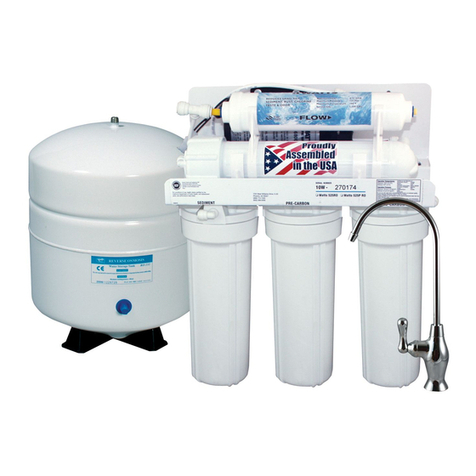
Watts
Watts 315 Installation, operation and maintenance manual
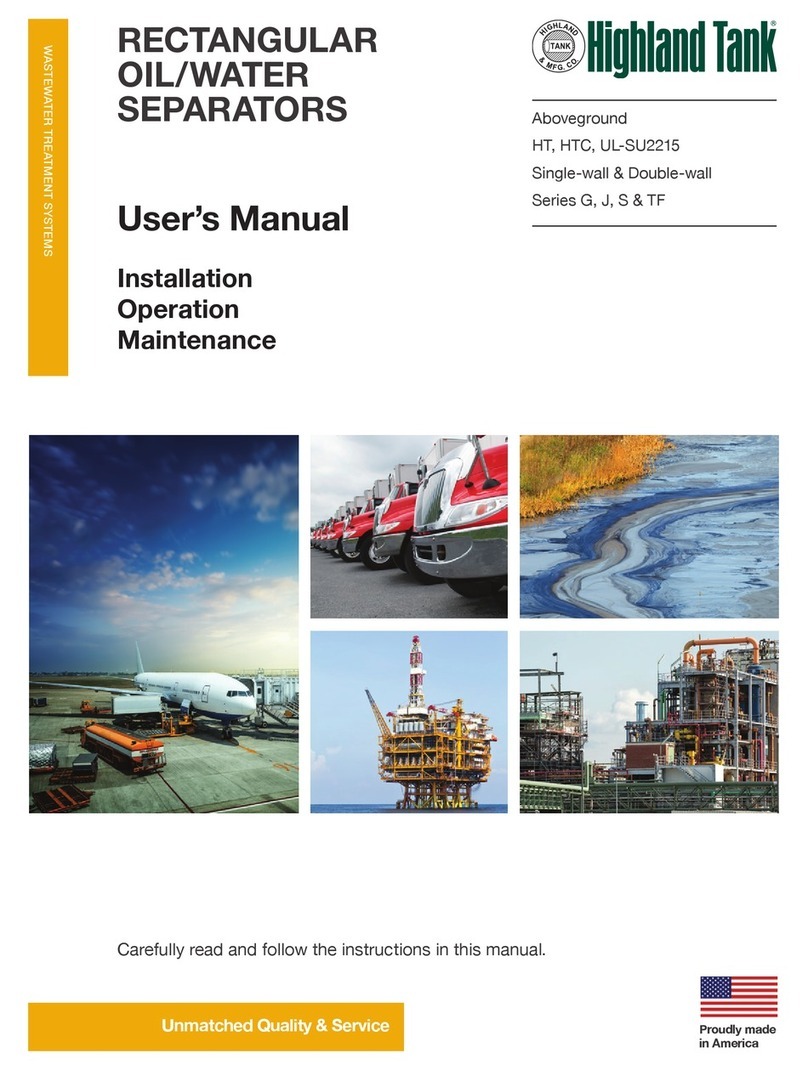
Highland Tank
Highland Tank R-HT Series user manual
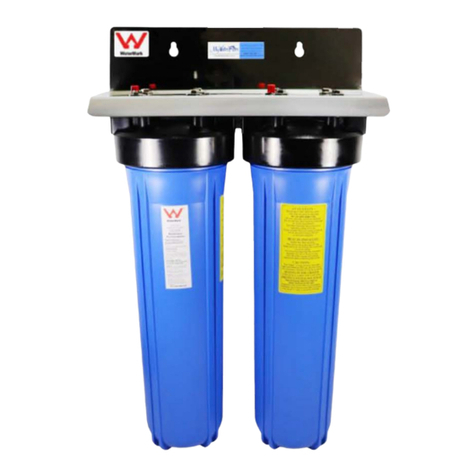
My Water Filter
My Water Filter MWF BIG BLUE WHOLE HOUSE WATER FILTRATION... Installation Instructions and Product Care

Insignia
Insignia NS-LGLT5531 Quick setup guide
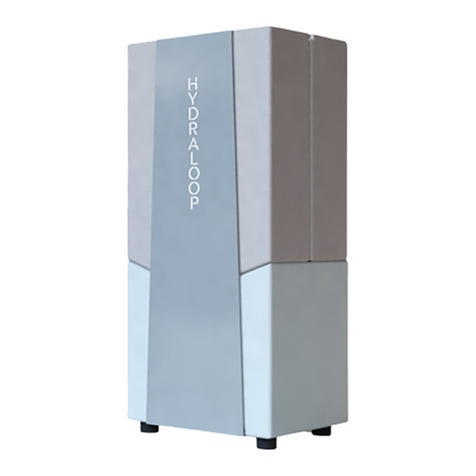
HYDRALOOP
HYDRALOOP H350 owner's manual
